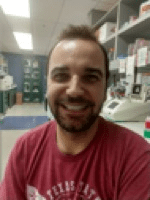In Vivo Induction of Replacement Beta-Cells in Non-Vital Tissues

Research Area
Diabetes
Grant Type
Fellowship
Year
2016
Abstract
In nearly all forms of diabetes, dangerously high blood sugar levels result from the loss of insulin producing beta-cells. Therefore, a cure for diabetes will require replacement of this specific pancreatic cell type. Transplantation studies demonstrate that replacement beta-cells can function in tissues outside the pancreas, including under the skin and kidney capsule and in the forearm muscles. Although the prevailing strategy of using beta-cells cultured from stem cells holds great promise, the inherent safety risks of implanting cultured cells into patients remains a fundamental obstacle. Alternatively, an in vivo approach, converting cells directly and without their removal from the patient’s body, to generate replacement beta-cells would not only bypass the safety risks associated with stem cells, culture conditions, immuno-suppressants, and surgeries, but may also have added advantages. Beta-cells derived in vivo may potentially integrate better and be more viable and functional. Leveraging the zebrafish vertebrate model, our lab uncovered factors and other novel strategies necessary to induce in vivo lineage conversion of differentiated muscle cells into pancreas-likecells. This breakthrough demonstrates that mature cells indeed maintain broad lineage potential, even while they remain in the body, Support from LLHF allows us to advance our in vivo technology further to lineage convert older zebrafish cells and mammalian cells into beta-cells. These studies are critical for our ultimate goal of generating a vast new source of replacement beta-cells for diabetics, via direct in vivo lineage reprogramming of tissues, such as skin, fat, blood vessel, and muscle, into pancreatic beta-cells.
